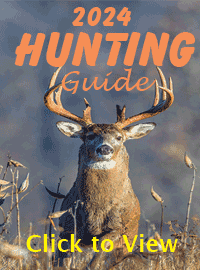Subscriptions
Menu
Advertisements
DEC seeks input on eagle management plan
3/3/2015 |
A proposed conservation plan to manage New York's population of the bald eagle is now available for public review and comment. DEC's Conservation Plan for Bald Eagles in New York State describes the historic and current status of the bald eagle in the state and provides guidelines for future management actions.
"New York State was instrumental in the restoration and recovery of the bald eagle in the northeast United States and continues to play an important role in providing suitable habitat for our nation's symbol," DEC Commissioner Joe Martens said. "Since the bald eagle depends primarily on freshwater rivers, lakes and streams for its food, a flourishing eagle population is a good indicator of New York's high quality water ways. Conservation of the bald eagle and its habitat plays an important role in preserving our biodiversity and ecosystem health. The plan aims to maintain the bald eagle's geographic diversity and ultimately ensure a healthy population within the state."
The bald eagle, currently listed as a threatened species in New York, continues to make a remarkable recovery across the state.
The Conservation Plan serves as a guide for landowners, resource managers, local government agencies and other stakeholders to manage and perpetuate the bald eagle and its habitat in New York.
This plan is also intended to inform the public of actions recommended to achieve the goal of a continued healthy bald eagle population, including its essential habitat and the ecosystems it depends upon.
The plan establishes objectives for bald eagles in New York and lays out actions to accomplish those objectives. Key objectives include:
•Maintain a statewide average breeding bald eagle population of at least 200 breeding pairs.
•Maintain protection of our significant wintering bald eagle population.
Key actions to meet these objectives include:
•Consult with landowners, developers, business and industry to ensure that proposed projects occurring near eagle nesting and wintering locations avoid or minimize impacts to bald eagles that may result from the potential impacts of: Land clearing, increased human disturbance, collisions with cars, trains, electric lines, wind turbines and other structures; and environmental contaminants, including lead and PCBs.
•Work collaboratively with landowners to limit human disturbance, address the risk of predation and gather information on the status of nests by building partnerships between landowners, NYSDEC, local land trusts, environmental groups, and volunteers.
•Discourage the intentional feeding of bald eagles to avoid potential exposure to contamination and disease.
•Collect dead eagles for necropsy to determine cause of death and assessment of exposure to heavy metals, toxins, and disease before sending along all eagle carcasses to the National Eagle Repository.
•Monitoring the distribution and abundance of breeding and wintering bald eagles in New York State at a level suitable to ensure objectives are met, incorporating volunteers where possible.
DEC will accept comments on the draft plan until Friday, April 10. Comments or questions should be addressed by email to wildlife@dec.ny.gov (note "bald eagle" in the subject line), or by phone, contact Dan Rosenblatt at 402-8884.
Comments can also be mailed to DEC's Wildlife Diversity Unit, 625 Broadway, Albany, NY 12233-4754.









